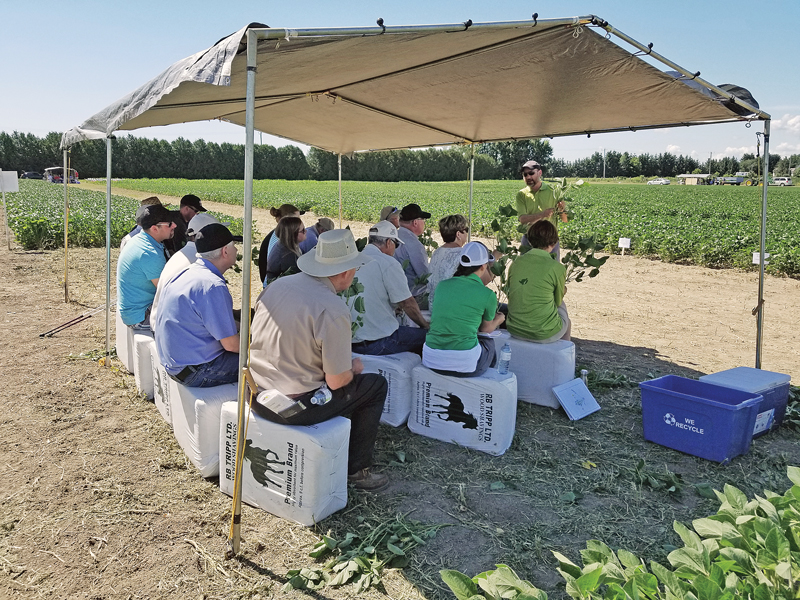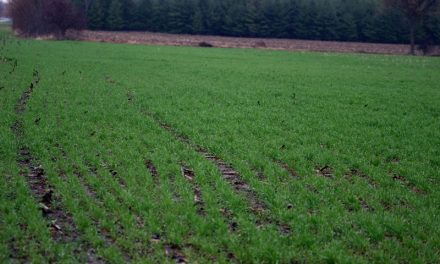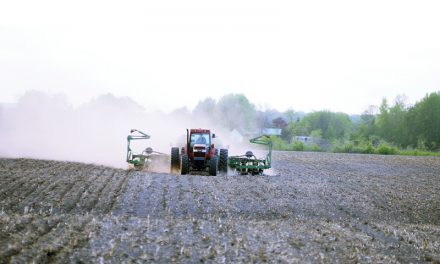Industry potential
Horst Bohner, at the station early soybean growth development, at the Eastern Ontario Crop Diagnostic Day, spoke to the attendees about current research results using fungicides and that he believes there is opportunity as an industry to see as many as 10 bushels more – although the results during the day’s session revealed only two or three more bushels per acre. Bohner also said he expected exciting innovations in the soybean industry to be coming down the pipes soon. Sawyer Helmer photo

Sawyer Helmer photo
by Kalynn Sawyer Helmer
AgriNews Staff Writer
WINCHESTER – The annual Eastern Ontario Crop Diagnostic Day was held once again this year at the Winchester Research Station on July 19. This is the 21st year the event has taken place and it featured 11 stations for the hundreds of attendees to visit throughout the day. At each of the 11 stations, expert presenters take 30 minutes to look at relevant issues for this season’s crops.
The 2018 stations included: disease management, fungicide and low-lignin alfalfa, compaction, western bean cutworm, soil examination, nitrogen management, herbicide injury, root health, winter wheat disease management, picket fence corn and soybeans and early soybean growth and development.
During the tour, Joanna Follings at the winter wheat station, reminded everyone about the dangers of the dry heat and minimal rain eastern Ontario has been experiencing this season. Follings was adamant that farmers check and restock their fire safety and fire prevention equipment regularly and be aware of the potential for fires with hot equipment.
Also at the winter wheat station, James Dyck reminded people that winter wheat takes on moisture very quickly. While field drying is an option, it can take many days and leaves the crop exposed to diseases for a longer period of time. Dyck recommended taking the wheat off early and drying it in a bin. Also to help mitigate disease, Dyck said aerating at night when the weather has cooled will help to keep the overall temperature down and hopefully reduce the risk of humidity in the grain.
During the event, certified crop advisors were able to receive 5.5 credits from the 11 sites and growers were able to get up to date research results to help them with their fields moving forward for the rest of the season.













